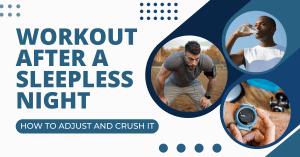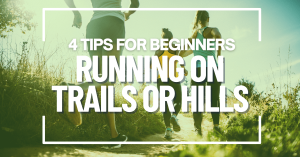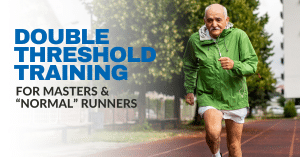There are few things more coveted by runners than the post workout massage.
But, is getting one the best thing to do for your body?
Runners are always looking for ways to decrease injury and increase longevity and, according to science, getting a post workout massage may be able to do both.
The difference between post workout massage and post race massage can be significant.
Bonus Content
Author of this post, accomplished athlete and believer in the power of massage, Allie Burdick shares even more in this special video. Want to learn even more? Then visit Allie at VitaTrain4Life.com. A blog focused on training and much more.
Post Workout Massage Versus Post Race
Depending on on how long or hard your effort on a training run is, chances are it will pale in comparison to the sufferfest of 26.2 or even the pain train of sprinting through a 5k.
- Post race massage is essentially given to soothe and repair damage from a very hard, prolonged effort and reduce inflammation from several minutes or several hours of racing in one day.
- Post workout massage is more about quick recovery so you can run hard the next day, week and month; basically throughout your training period, and remain injury free.
DeAnna Bevilacqua, Certified Massage Therapist (CMT) at Origins Massage and Wellness in Burlington Vermont, shared her knowledge in a recent phone interview saying:
“Getting a post workout massage can speed up muscle recovery, decrease post workout soreness, and promote greater flexibility and range of motion in joints by relieving soft tissue tension.”
For more information on how to get rid of soreness, please read 9 Ways To Get Rid Of Muscle Soreness.
What Are The Benefits
These benefits read like a wish list for runners everywhere.
However, post workout massage is not without it’s dangers. There is a fine line between receiving a recovery massage and causing damage to muscle and tissue that has been worked hard and needs a gentle touch and special care.
“Your massage therapist should avoid applying too much pressure immediately post workout,” says Bevilacqua “as this can end up lengthening healing time and increasing soreness.
Also, avoid massage for any acute injuries at least within the first 72 hours, particularly in any bruised or inflamed areas.”
However, when done correctly and with a professional licensed massage therapist, the benefits can be numerous.
I have been running and racing since the year 2000 and only recently realized the benefits post workout massage can have on my aging body. Through the years I have continued to run faster races, have challenged myself with multiple marathons and then, when I turned 35, turned my attention to triathlon.
One of the biggest reasons I moved from “just” running to triathlon was the toll running was taking on my body. I started having more injuries, even with a steady dose of strength training.
I’m not always able to align my massage directly after a workout but, when I can, the benefits are immediate and I can train harder and recover faster for the next 7-10 days.
I used to think of getting a post workout massage as an indulgence but I now see it as a necessity of training well into my 40s and beyond. And, if I pay the massage therapist now, I most likely will not have to pay a physical therapist, later.
Just run a marathon? Have one scheduled, then make sure to read How To Recover After A Marathon.
How Do I Know?
Mostly because I have been training and racing for 17 years, from a local level to multiple national championships and a world championship team in 2014. I know how I feel both with and without post workout massage and my body and mind much prefer the former.
Also, because science.
A recent study in the Journal of Strength and Conditioning Research examined whether or not massage can increase post workout strength and proprioception.
The latter is the sense of awareness you have of your body and how it moves in space. The study focused on the gastrocnemius, the muscle that forms the double-tear shape, giving the calf it’s distinctive look.
Twenty-one participants were involved in the study, 11 of which received a 15 minute post workout massage after running up and down the stairs in a five story building 20 times.
The entire group was then tested for proprioception with a 30-minute ball kicking test and then strength assessments were done using electromyography (EMG) during an isometric flexion of the foot.
The Results?
Proprioception improved more in those who had the massage then those who did not but, only in the ankle. The researchers believe this was because it was measured with a bent knee.
However, it’s still a viable argument for injury prevention which is great news for runners.
EMG analysis also showed greater improvement in the post workout massage group but the researchers noted that at least a 10 minute massage in key areas is needed to have a more lasting effect.
I think that means runners everywhere now have a valid argument for prolonged massage in overworked or irritated areas like calves, hamstrings and quadriceps.
In addition to the specificities of the above study, there are numerous other science-backed benefits of post workout massage for runners and athletes of all kinds.
Physiological Benefits
The latest research conducted by scientists from the Buck Institute for Research on Aging at McMaster University in Ontario shows that on the cellular level massage reduces inflammation and promotes the growth of new mitochondria in skeletal muscle.
How does that help runners? By easing pain, building muscle and helping them to recover quicker, which is exactly what most athletes are looking for.
Lesser known is the cardiovascular benefit of post workout massage. According to the American Massage Therapy Association (AMTA):
“[massage] dilates blood vessels, which helps them work more efficiently to promote circulation. The manual assistance of encouraging venous blood flow back to the heart enhances blood flow, which delivers fresh oxygen and nutrients to the tissue and promotes the removal of waste products and toxins. Thanks to the relaxed state you’re in during and after the massage, your heart rate lowers.”
Psychological Benefits
The sports massage study in the Journal of Sports Medicine and Physical Fitness points out that athleticism doesn’t rely solely on physical strength but also mental stability and laser focus, all of which can be improved with regular post workout massage:
“Tactical maneuvering in cycling or an ability to focus on a task (e.g., endurance events) can also affect performance. Therefore, the psychological effect provided to an athlete by an experience such as massage may be of importance in a non-physiological manner.”
Regular post workout massage can help alleviate stress, tension and anxiety while promoting relaxation by activating your parasympathetic nervous system. Massage gives you an increase in dopamine and serotonin levels and a reduction in cortisol levels, which are directly linked to stress.
A relaxed, low-stress state encourages focus, a good thing to have before going into any sport, group exercise class or competition.
Massage Choices for Runners
According to Bevilacqua, there are many types of post workout massage that can be beneficial for runners, depending on their specific goals. She explained that many therapists will generally use a blend of techniques and draw from a variety of massage modalities, to fit varying needs and body types.
Before scheduling your post workout massage, you may want to inquire about these three specific techniques:
Sports Massage or Deep Tissue Massage are great options for providing focused work that targets specific problem areas, to keep your body functioning as efficiently as possible and prevent injury during workouts.
If you are feeling particularly achy after a hard workout or race, a Swedish Massage can be beneficial as it uses long, flowing strokes to relax the body and ease inflammation. Vigorous Swedish massage can also be helpful prior to a workout to stimulate circulation and gently warm up the muscles, without creating any damage to the tissues.
ART (Active Release Technique) combines trigger point massage with movement, and can be helpful for improving functional flexibility after an injury.
Finding a Certified Massage Therapist
This can be the most difficult part, says Bevilacqua, since it’s very important to select a massage therapist who is licensed or certified to perform massage in their state and, has the appropriate education, knowledge and experience to work successfully with athletes.
“Finding someone recommended by people you know is a plus,” Bevilacqua suggested “also choosing a massage therapist who is active themselves can be beneficial as they often will have a greater sense of understanding and empathy for the types of experiences and challenges runners face.”
We Could Not Agree More!
Now that you know the real benefits for getting a post workout massage, find an appropriate, licensed therapist and let the recovery begin.
To learn even more, please read Massage For Runners, The What, When And How,







